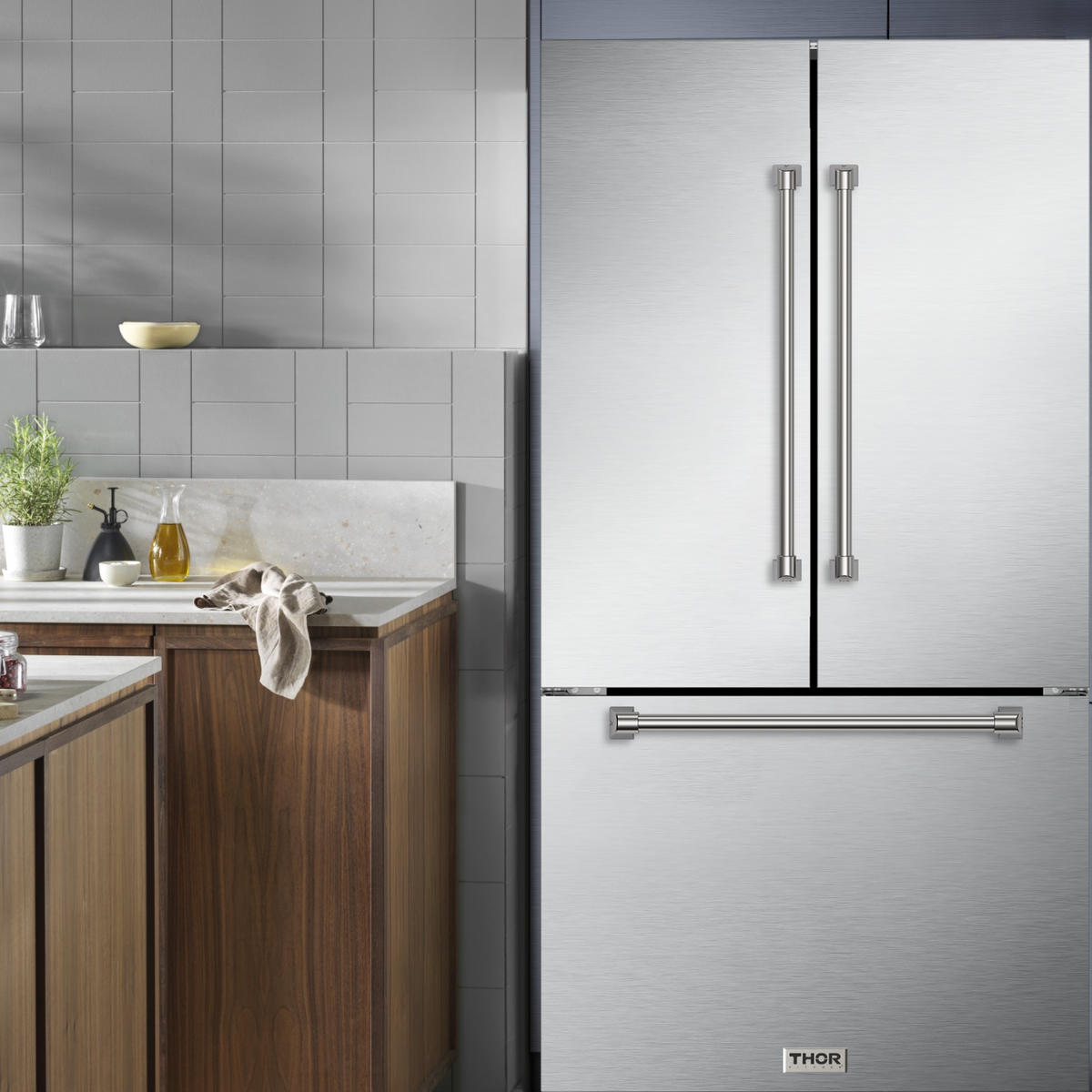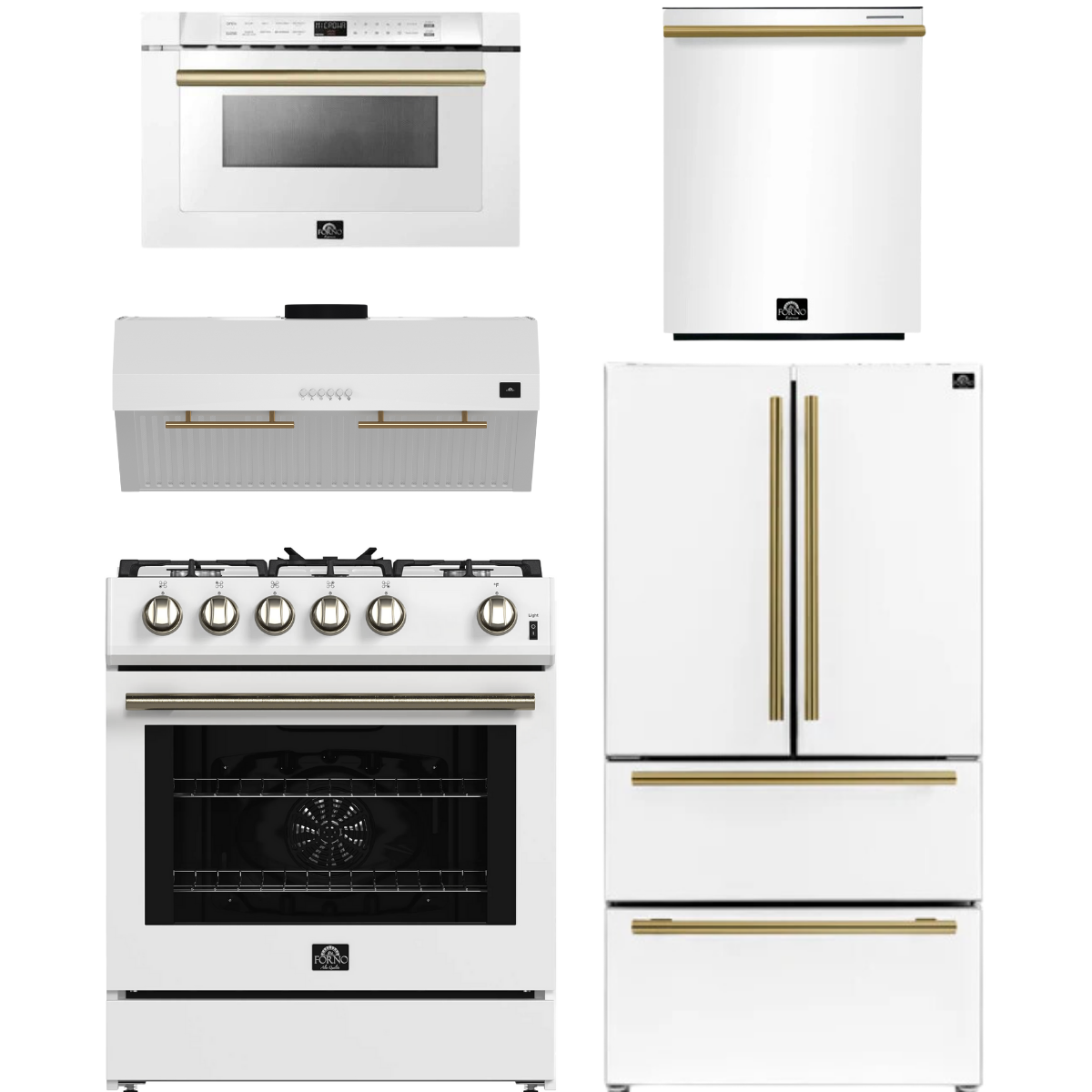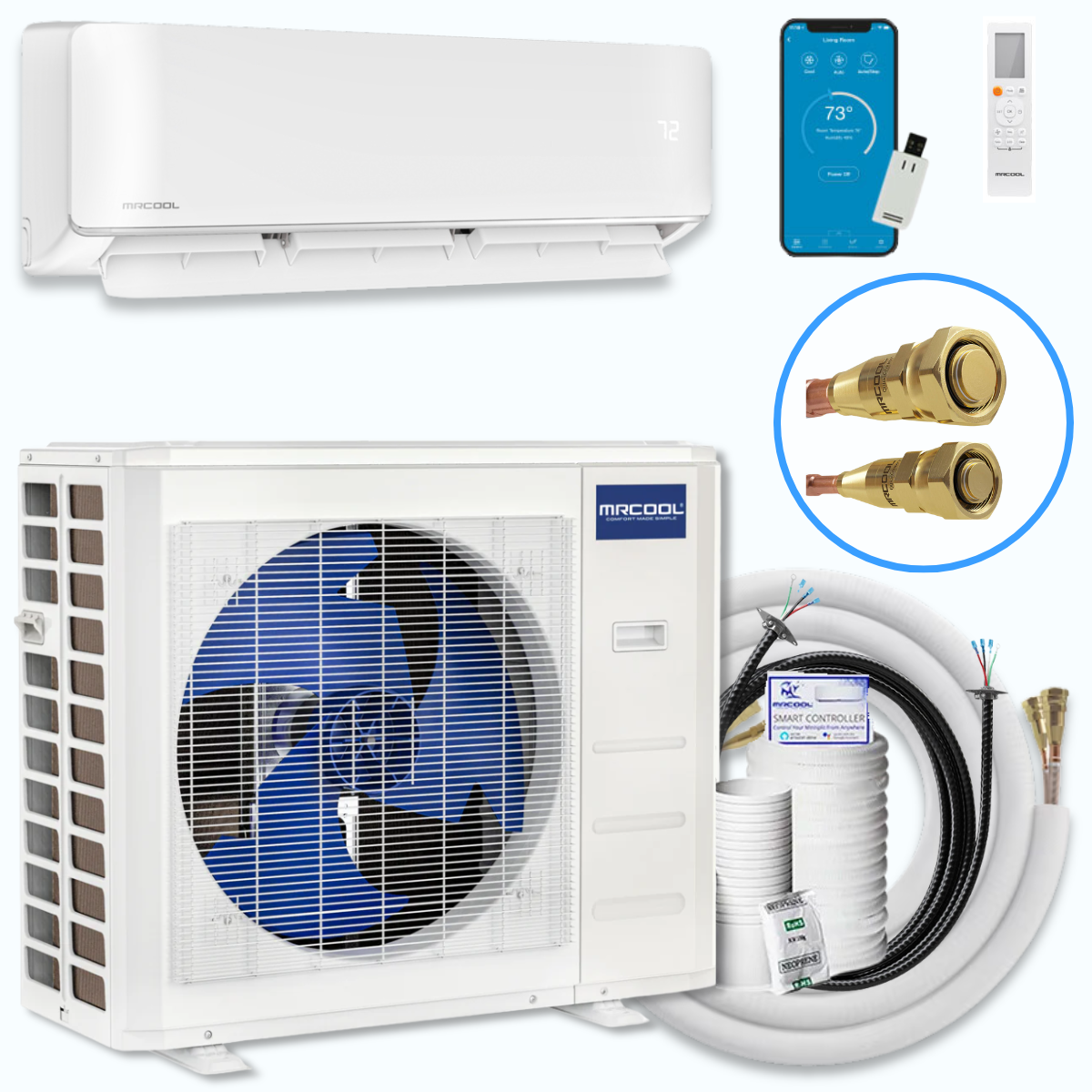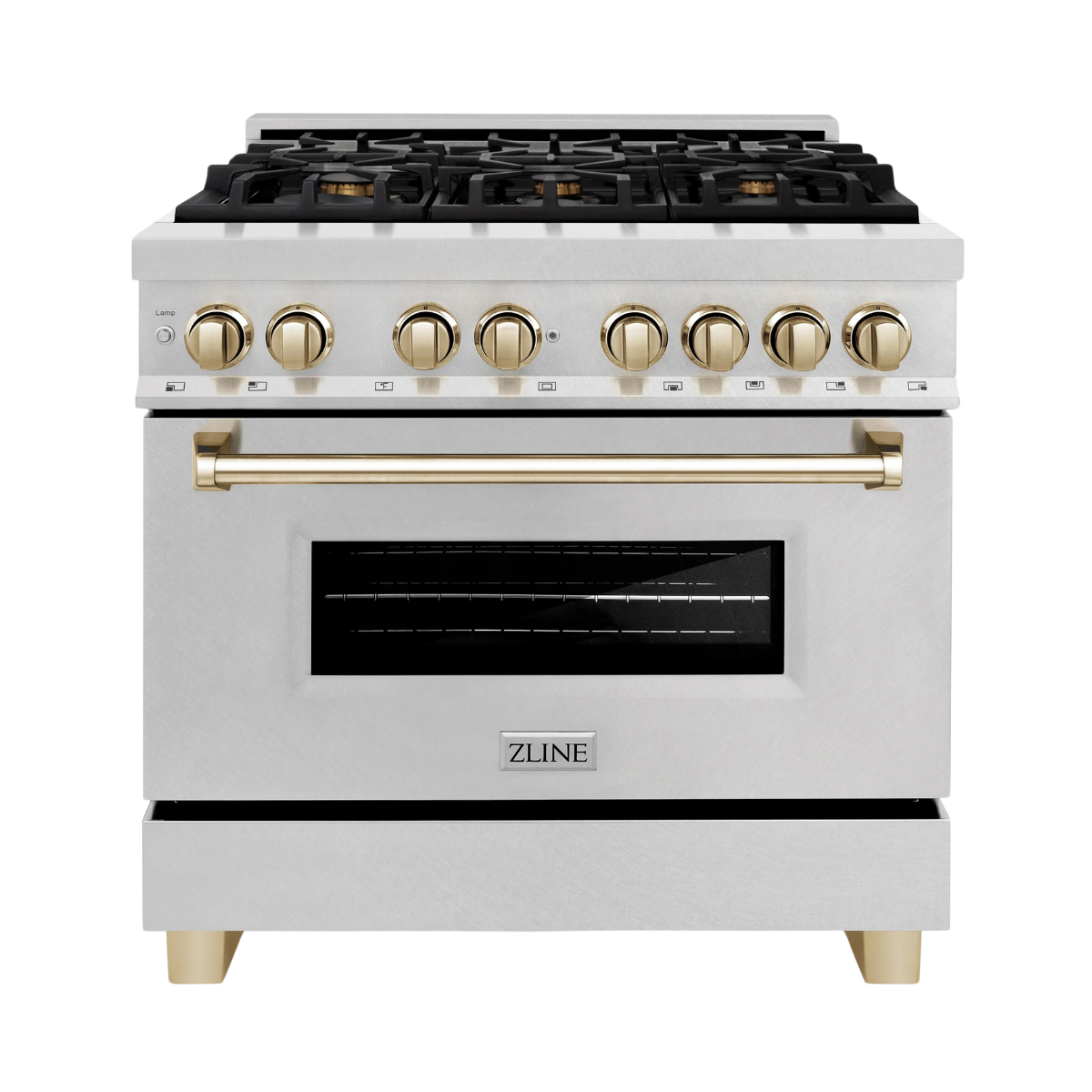The heating, ventilation and air conditioning (HVAC) system is an array of appliances and technologies that lets you control your home’s climate and ambient temperature. The HVAC system is one of the most critical elements of your household. Without heating and cooling functions, your home’s interior air temperature is at the mercy of year-round outdoor conditions, such as hot summers, cold winters or high humidity levels. It’s also essential for regulating your home ventilation and air circulation, necessary to keep the indoor air healthy. Learn about the best types of home heating and cooling systems available today, how they function and how efficiently they control your home’s climate.
Ductless Mini Split Systems
One of the most efficient home HVAC systems available today is the ductless mini split system. In the past, mini splits were a minor part of the U.S. home air conditioning market, overshadowed by traditional centralized and ducted AC systems. However, the mini split has become more popular in recent years, providing many features and advantages that legacy HVAC units could not offer.
Parts of a Mini Split System
A mini split system comprises three essential elements: a singular outdoor unit, one or multiple indoor units and the line set connecting the outdoor unit to the indoor units. The outdoor unit, also known as a condenser or compressor, is a large box-shaped appliance intended to sit outside the house. It contains a compressor, an array of condenser coils and a large fan.
An indoor unit, also called an evaporator or air handler, performs two roles: ventilation and cooling or heating, depending on the current mode. Indoor units contain an array of evaporator coils, an air blower, a condensation capturing system and an air filter. Each indoor unit is connected to the outdoor unit via the line set, which comprises three parts:

- The power or electrical line, powering the electronics and allowing each element to function
- The refrigerant line, carrying a quantity of refrigerant and giving the system its cooling and heating capabilities
- The condensate line, carrying and evacuating water condensation from the indoor units to the outside, preventing mold and mildew from developing inside
How Mini Splits Work
A typical mini split system set to cooling mode sends cold, liquid refrigerant to the evaporator coils in each indoor unit. As it circulates inside these coils, the air blower absorbs the warm indoor air, sending it through the air filter and over the cool coils and expelling cool, dry air back inside.
The refrigerant in the indoor unit’s coils expands as it absorbs heat, turning into a warm, high-pressure gas and circulating back to the outdoor unit. Once it reaches the outdoor unit’s coil array, the large fan inside it expels the heat outside. The refrigerant returns to the compressor after circling through the condenser coils, transforming it from a gaseous state to liquid. The refrigerant’s cycle then repeats as it returns to the indoor units.
Shop Our Mini Split SystemsWhat About Heat Pumps?
A heat pump is a mini split air conditioner system that features both heating and cooling modes. When set to heating mode, the refrigerant’s cycle is essentially inverted: indoor units absorb cool air out of the house and blow warm air back inside, whereas outdoor units expel the cold air back outside. In heating mode, the roles of the coil arrays inside the indoor and outdoor units are reversed; outdoor coils become evaporator coils, and indoor coils become condensers.

What Are the Advantages of a Mini Split System?
There are four primary advantages to using a ductless mini split system for your home’s heating and cooling needs:
- No ducts needed: A ductless mini split air conditioner does not require any ductwork to function, making it the ideal HVAC solution for new homes without ducting or retrofitting an older home after renovations.
- High flexibility: Each indoor unit in a mini split system controls the climate in one zone (a room or area of your house), and your system can have anywhere between one and eight zones. Additionally, you can configure each unit to a specific temperature, eliminating the inefficiencies associated with traditional central AC (they must run at 100% power in all ducted rooms).
- Cost-effectiveness: High-quality mini split systems such as the MRCOOL DIY Mini Split feature high SEER and HSPF ratings, helping you save significant amounts of money on your power bills without compromising cooling and heating efficiency.
- Long-lasting: Have you ever asked yourself “How long do HVAC systems last?” A traditional central AC system has an average lifespan of 12 to 17 years, depending on the model and the level of regular maintenance. In contrast, a mini split system given regular care and maintenance should last 20 years at the minimum.

Packaged Air Conditioning Systems
A packaged air conditioning system is a single, all-in-one unit capable of providing cooling, heating and ventilation to an entire house without relying on indoor appliances or equipment like air handlers.
How a Packaged AC System Works
A packaged AC unit typically resembles a large, rectangular cabinet and is designed for outside installation like the outdoor unit of a mini split system. It centralizes all the parts and elements generally found in a mini split or another AC system into one unit (condenser, compressor, evaporator, exhaust fan, etc.). As with mini splits, a packaged AC may be called a packaged heat pump if it offers both heating and cooling modes. An example is the MRCOOL Multi-Position Packaged Heat Pump.
The only elements extending out of the central unit are the connecting ducts, distributing cool or hot air throughout the house and sending them into each room via air diffusers. The duct network typically consists of a mixture of rigid (fixed metal), semi-rigid (aluminum hoses) and flexible ducts (plastic hoses). The packaged AC unit is typically placed on a concrete slab at ground level outside the house. Depending on your home’s roof shape and configuration, you may opt for a roof-mounted placement instead.

What Are the Advantages of a Packaged AC System?
A packaged AC system is an excellent choice if you have an older home with legacy ducting or if you have recently renovated your house’s ductwork. Choosing this home HVAC solution offers multiple benefits:
- Saves indoor space: This system comprises a single unit placed outside your home, eliminating the need for a basement, an attic or wall space for indoor air handlers. This factor can be a significant advantage in rooms with limited indoor space.
- Easy maintenance: The centralization of every element into one package means that everything that needs regular cleaning and maintenance is within easy reach.
- High capacity: Packaged AC systems are excellent for whole-house cooling and heating in large houses because they have the BTU capacity to efficiently control the temperature in the entire property without temperature gaps.
Window-Mounted Air Conditioners
Window-mounted air conditioners, or simply window ACs, are smaller and more mechanically simple air conditioners than most other types available on the market. A typical window AC comprises a single unit like a packaged AC system. Each unit is designed to control the temperature in a single room or zone like an indoor air handler in a mini split system.
How the Window AC System Works
Like other air conditioner systems, a window AC unit comprises a compressor, an array of condenser coils, a condenser fan and an air blower. Instead of relying on a separate outdoor unit, indoor handlers and a connecting line set, the window air conditioner integrates all elements into one appliance.
One of the unique aspects of window ACs is their positioning; they are not designed for installation in a basement, attic or outside. Instead, they are mounted in or under a room window.
Like a mini split system’s indoor handler, the air blower pulls in the warm air from the room and sends cool air back. The warm air circulates to the condenser fan via the coil array, exhausting it directly outside. Although most window AC units are cooling-only, some models are window heat pumps capable of single-room heating and cooling.

What Are the Advantages of a Window AC System?
If you only need to control the climate and temperature in one room or zone (a specific bedroom, a bathroom or a studio apartment), a window air conditioner offers many benefits.
- Portability: Although each unit can only serve a single zone, it is sufficiently compact to make removal easy. You can pull it out of its current location, install it in a different room or even take it with you if you move to another house.
- Affordability: Window-mounted air conditioning systems are typically the most affordable, making them economical for single-zone climate control.
- Quick installation: A window AC is a self-contained unit that requires little work to install and set up. You can get a window unit up and running in just a few minutes.
- Space-efficient: Once installed, a window unit does not protrude much into your room, saving precious space. Some models, such as the MRCOOL U-Shaped Window AC, even allow you to open and close the window above the unit. This space efficiency is why window ACs are the top choice for apartments and small rooms.
Electric Fireplaces
An electric fireplace is more than just a decorative novelty; an electric fireplace is a modern approach to heating with a classic look and more advantages than most homeowners may realize.
Although electric fireplaces are exclusively heating systems, they can supplement your home’s existing HVAC system to provide additional comfort.
How an Electric Fireplace Works
Although it features the appearance of a traditional wood-burning fireplace, an electric fireplace does not burn wood and, therefore, does not require a chimney or regular cleaning of ash and burned residue. Instead, the system employs an electrically powered heating element, using either the induction heating principle the same as induction stoves or infrared technology to produce heat. Once the heating element is at the correct temperature, a fan disperses heated air into the room. No venting to the outside is required, making them relatively easy to install and maintain.
The average electric fireplace produces between 4,000 and 10,000 BTU of heat, and most models feature multiple heating modes. Like air conditioners, there are numerous types and sizes suitable for rooms of different sizes. For example, the Modern Flames 44" LPM-4416 features two heating modes: a low heat 5,000 BTU mode suited for rooms up to 400 ft² and a high heat 10,000 BTU mode suitable for living rooms and areas up to 800 ft².

What Are the Advantages of Electric Fireplaces?
Electric fireplaces give homeowners numerous advantages for heating a living room or another primary living space. Here are the most critical benefits:
- Safety: One of the primary reasons to use an electric fireplace is to benefit from the heat and traditional feel without the safety hazards, such as fumes, ash, open flames and flying embers.
- Energy efficiency: An electric fireplace is an ideal example of a supplemental source of heating, which can help ease the load on your primary HVAC system during winter. Additionally, an electric fireplace requires a significantly smaller amount of electricity to function than a typical home cooling and heating system, giving you more heat for the dollar spent on power.
- Versatile: Although most homeowners think of the fireplace as a central element in a living room, modern electric fireplaces can also fit into other areas of your house. For example, you can install one in your bedroom, or even in the kitchen.
- Longevity: An electric fireplace is a relatively uncomplicated appliance that is practical and easy to maintain. A high-quality model should last at least 20 years if given proper care and maintenance.
Take Control of Your Home’s Heating & Cooling with Premium Home Source
Premium Home Source is a family-owned business with one objective: to provide Americans with the appliances and equipment they need to build their dream homes. Our team is made up of experts in home building and kitchen design with almost eight decades of combined experience. This experience allows us to select and offer only the finest appliances with the highest practicality and build quality at the best possible prices. For more information about our products and services, call our customer support team at 1-800-805-7102.
Image Credits
IIIerlok_xolms/Shutterstock.com
DStarky/Shutterstock.com
antoniodiaz/Shutterstock.com
Liz Tracy Photography/Shutterstock.com
Konstantin L/Shutterstock.com
Chad Robertson Media/Shutterstock.com
Christian Delbert/Shutterstock.com






1 comment
bijan air condition
Thanks for the helpful info! I live just outside Baltimore, so I’ll definitely keep SuperTech in mind for my next air conditioning repair. Sounds like you guys really care about doing the job right.